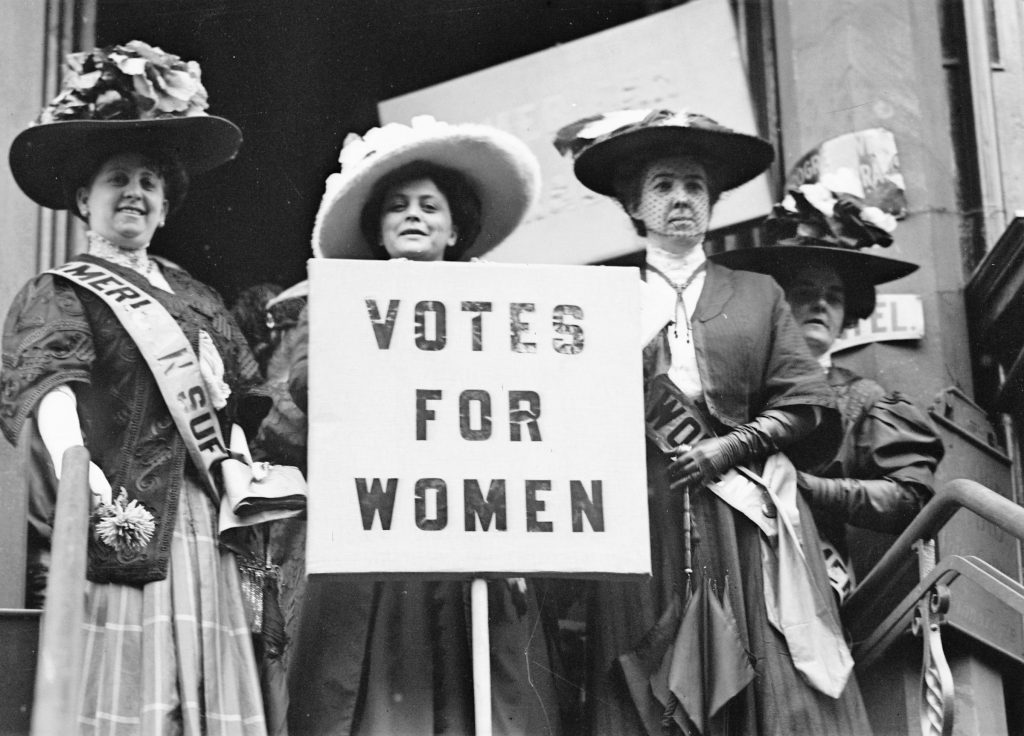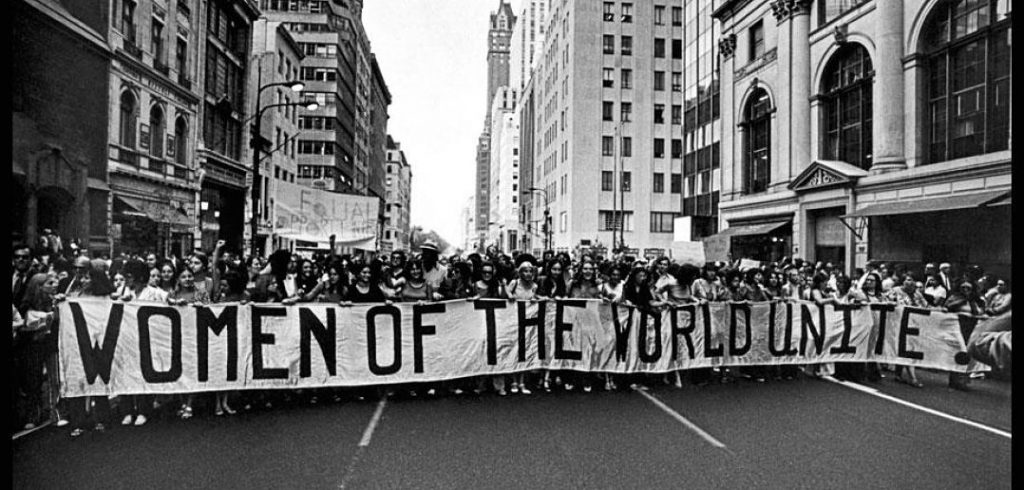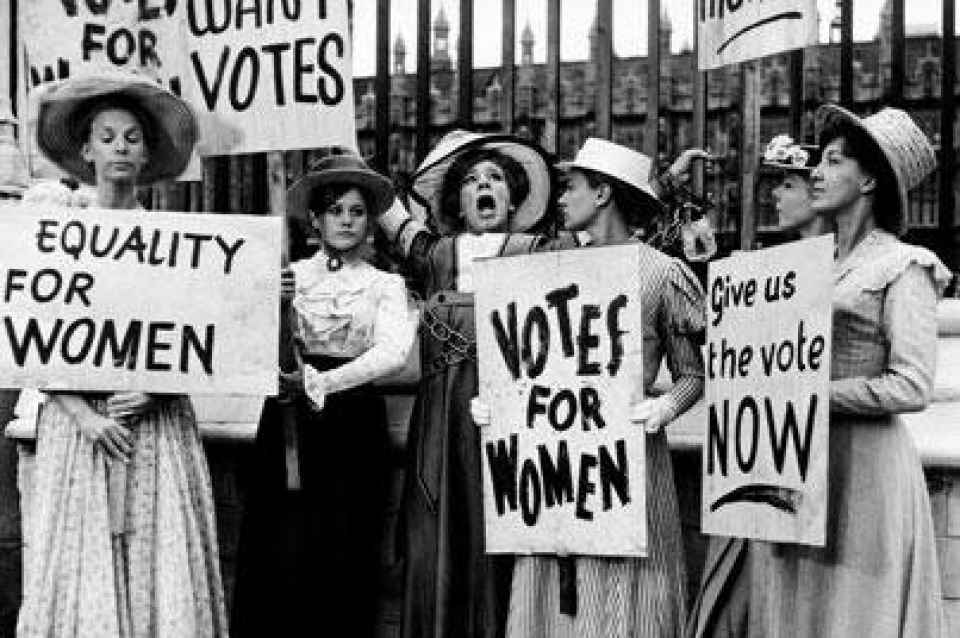Forward by Donna Kreps, President of Residential Real Estate Services, F.C. Tucker Company, Inc.
This month the United States celebrates the 100th year of the monumental decision to allow women the right to vote! As an American, I am humbled to think about the selfless women and men who fought tirelessly to make voting equality a reality. It’s an act I have been able to participate in my entire adult life, never questioning whether I had the right yet women two short generations before me were denied this basic freedom. In some ways that feels unimaginable, and in other ways it seems particularly relevant today.
Reflecting on this milestone, it’s appropriate to recognize the women in our organization. Our female salesforce is among the many women who represent the 11.6 million female business owners in the United States; businesses that employ more than 8.4 million people and generate $1.7 trillion in sales. That’s the progress that can occur when men and women have the equal right to achieve big things!
We are proud to be a firm that embraces women in business.
We wish to thank our staff, salesforce, franchise owners and management team who serve their local community; both by representing the needs of buyers and sellers and who give back by serving our community through their civic involvement.
Here’s to the next 100 years and the changes they bring! Many pioneers have gone before us in making change happen, may we all endeavor to be a part of the progress that still needs to take place in all areas of equality.
If you don’t know much about the women’s suffrage movement in the United States, you aren’t alone. In many textbooks, the entire 72-year struggle for women’s suffrage is often glossed over and summed up with a sentence like “Congress granted women the right to vote in 1920.”
It is true that Secretary of State Bainbridge Colby certified the ratification of the 19th Amendment on Aug. 26, 1920. With a stroke of his pen, women in this nation were officially promised that they would never again be denied the right to vote based on their sex alone.
The real story of women’s suffrage, however, is much more dramatic, complicated and nuanced than most people realize. It is a history that also continues to remain significant even today because it is a reminder that democracy works. Women weren’t “given” the vote. They won it, one hard fight for change after another.
A State-by-State Battle for Progress
![]()


Long before the drama finished on the national stage, women’s suffrage won a lot of small battles for the vote. Many of the western states officially granted women the right to vote long before 1920. Women in the Territory of Wyoming, for example, could vote back in 1869, before the area was even officially a state. So could women in Utah, Montana, Alaska and Washington, among others.
Historically, that makes a lot of sense. Women in the eastern and southern parts of the country were generally expected to adhere to the idea of “true womanhood,” which cast them in the role of the homebound wife and mother who lived to serve her family. In the Wild West, where women were expected to brave the same dangers as men — often with a shotgun in their hands — it was much harder to deny them an equal voice in the way things were run.
Convincing the opposition in other areas that women needed the right to vote, however, wasn’t easy. Advocating the idea that it was neither fair nor equal to disenfranchise half of the nation was never enough to overcome the movement’s detractors.
Indeed, the ratification of the 14th and 15th Amendments following the Civil War specifically granted voting power to all male citizens, including former slaves — but women were still denied that power on the national stage. The outrage felt by many women eventually led Elizabeth Cady Stanton and Susan B. Anthony (arguably the two most famous figures associated with the women’s rights movement) to form the National Woman Suffrage Association. The fight for a new Constitutional amendment that would give women universal voting rights had begun in earnest.
Champions for Social Change
Suffragists were a diverse lot (and it’s a mistake to think that they were only women since many men were also part of the movement). Some advocated militant actions that led to both national attention for the movement and horrific consequences for some of the suffragists, who were often jailed and abused.
The larger majority, Jane Addams among them, took the approach that women — in their prescribed roles as wives and mothers — were uniquely suited to understand the issues that were most important to families. Their votes, they argued, could ultimately help inform the educational and health services this nation needed to grow stronger.
Women could also make significant changes to laws surrounding child labor, the juvenile courts and workplace conditions. Indeed, many women were already using their wealth and private connections as a form of activism to influence politics, but they lacked real power without the vote. These suffragists argued — relentlessly and fiercely — that women having the vote was good for the family unit, and that was ultimately good for the country.
Movement Forward Despite National Chaos
![]()


Quite naturally, World War I removed attention from the suffragist movement, although it ultimately helped the cause succeed.
Women in all areas of the country — not just out in the American West — were pushed into roles that put them shoulder-to-shoulder with men. Mainstream suffragists put aside their focus on the vote and turned their attention to important national needs, like munition production, fundraising, food conservation and more.
Much like it had been in the Old West, women were being seen as equal participants in America and essential to the nation’s survival. That may have been exactly the push that was needed to convince enough people that continuing to deny women the vote was not only unfair but harmful to the country. It’s no coincidence that the movement for women’s suffrage finally paid off less than two years after the war’s end.
A Story of Democracy in Action
The real story of women’s suffrage isn’t about women’s right to vote: It’s about how a powerless class of people was able to overcome its limitations and gain allies among those who did have power. In large part, they managed to overcome foolish attitudes and reactionary fears associated with progress and change without violence and bloodshed.
That’s what makes the history of the movement so relevant today. Positive, progressive changes in society may sometimes be painfully slow to come about, but they can happen — even when people feel like they have no real voice or power. The same struggles have been reflected in nearly every aspect of social change this nation has seen over time, including the fight for marriage equality and the Fair Housing Act.
This is the true legacy that’s honored when we acknowledge the importance of the 19th Amendment. The road to progress is seldom clean, easy or straight, but every step forward is still progress.




